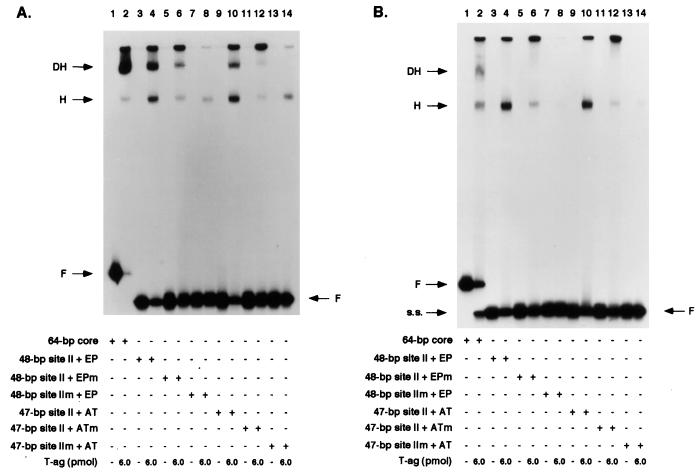FIG. 9.
Representative gel mobility shift assays used to assess the ability of T-ag to interact with oligonucleotides containing site II and either of the flanking sequences. (A) The experiments were performed in the presence of AMP-PNP with 6 pmol of T-ag and 25 fmol of the indicated oligonucleotide. As a positive control, the reaction in lane 2 was conducted with T-ag and the 64-bp core oligonucleotide. Reaction products formed with T-ag and the 48-bp site II + EP, the 48-bp site II + EPm, and the 48-bp site IIm + EP oligonucleotides are shown in lanes 4, 6, and 8, respectively. Reactions conducted with the 47-bp site II + AT, the 47-bp site II + ATm, and the 47-bp site IIm + AT oligonucleotides are shown in lanes 10, 12, and 14, respectively. The products of band shift reactions conducted in the absence of T-ag and the indicated oligonucleotides are shown in the odd-numbered lanes. (B) The experiments are identical to those in panel A, except that they were conducted in the presence of ATP. In both panels the arrows indicate the positions of T-ag hexamers (H), T-ag double hexamers (DH), and free DNA (F). Single-stranded DNA (s.s.), formed owing to the helicase activity of T-ag, is present in lane 2. The protein-to-oligonucleotide ratio with 6 pmol of T-ag and 25 fmol of oligonucleotide is 240:1.

